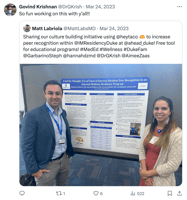Photo by Brett Jordan on Unsplash The irony of feeling more isolated despite constant connectivity...
Unlocking Employee Engagement: The Power of Gamification and Fun in the Workplace
In today’s fast-paced and distributed work environment, maintaining high levels of employee engagement is crucial for a company's success. Engaged employees feel a sense of belonging with their team and organization, they understand how their work and presence help deliver results and are in turn more productive, innovative, and committed to their organization’s goals. However, achieving this level of engagement can be challenging, especially when people are working behind screens miles away from each other. They are physically separated from each other, and as a result, the whole of the company, which makes engagement a never-ending practice companies are investing time and energy into.
One effective strategy that has gained popularity is the incorporation of gamification for employee engagement and fun into the workplace. Here’s why this approach is essential for fostering a vibrant and engaged workforce.
1. Boosts Motivation and Productivity
Gamification leverages the inherent human love for (friendly) competition and achievement. By introducing game-like elements such as badges, leaderboards, and challenges into daily tasks, employees feel a sense of accomplishment and progress. This method taps into intrinsic motivation, encouraging employees to strive for excellence. As a result, productivity increases, and tasks that might otherwise seem mundane become more engaging and enjoyable.
2. Encourages Collaboration and Team Building
Games often require teamwork and collaboration, fostering stronger relationships among colleagues. By working together to achieve common goals, employees build trust and camaraderie. This collaborative spirit spills over into daily work activities, creating a more cohesive and supportive work environment. Additionally, friendly competition through team-based challenges can strengthen bonds and encourage a healthy competitive spirit.
3. Promotes Recognition and Appreciation
A gamified workplace often includes mechanisms for recognizing and rewarding employees' achievements. Public recognition, such as leaderboards and digital badges, highlights individual and team accomplishments, boosting morale and fostering a culture of appreciation. Platforms like HeyTaco, for example, allow peers to give each other digital “tacos” as tokens of appreciation, integrating recognition into the daily workflow and making it a fun and integral part of the company culture.
4. Reduces Stress and Burnout
Incorporating fun activities and gamified elements into the workplace can significantly reduce stress and prevent burnout. Fun and engaging activities provide employees with a mental break from their routine tasks, allowing them to recharge and return to work with renewed energy. A workplace that values fun and play encourages a positive atmosphere where employees feel happier and more satisfied with their jobs.
5. Drives Innovation and Creativity
A fun and engaging work environment encourages employees to think outside the box and take creative risks. Gamification stimulates curiosity and exploration, leading to innovative problem-solving approaches. When employees are not afraid to experiment and fail in a supportive environment, they are more likely to come up with groundbreaking ideas that drive the company forward.
Gamification Gone Wrong
While gamification for employee engagement can be a powerful tool for boosting productivity and motivation, it is not without its potential pitfalls. When implemented poorly, gamification can backfire, leading to negative consequences such as decreased motivation, burnout, and even toxic competition. Here’s a look at some common pitfalls of gamification and how to avoid them to ensure a positive and effective implementation.
1. Overemphasis on Competition
Pitfall: Excessive focus on competition can lead to a cutthroat environment where employees are more interested in outdoing their peers than in collaborating and supporting each other.
Solution: Balance competition with collaboration. Design gamified elements that encourage teamwork and collective achievements. Recognize and reward not just individual accomplishments but also team successes.
2. Inauthentic Rewards
Pitfall: Offering rewards that are not meaningful or relevant to employees can diminish the value of gamification. If rewards are perceived as trivial or unattainable, employees may become disengaged.
Solution: Ensure rewards are meaningful and aligned with employee interests and values. Involve employees in deciding what types of rewards are most motivating for them, whether they are tangible rewards like company T-shirts or intangible ones like extra time off.
3. Ignoring Intrinsic Motivation
Pitfall: Relying solely on external rewards can undermine intrinsic motivation. When employees are motivated only by points or prizes, their genuine interest in the work itself may diminish.
Solution: Design gamification to enhance intrinsic motivation by making tasks more engaging and enjoyable. Focus on creating a sense of achievement and progress rather than just doling out rewards. Encourage activities that employees find inherently satisfying.
4. One-Size-Fits-All Approach
Pitfall: Implementing a gamification system that doesn’t consider the diverse preferences and work styles of employees can lead to disengagement. What motivates one group of employees might not work for another.
Solution: Customize gamification strategies to fit different teams and roles within the organization. Offer a variety of gamified elements and allow employees to choose the ones that resonate most with them.
5. Lack of Feedback and Iteration
Pitfall: A set-it-and-forget-it approach to gamification can lead to stagnation. Without ongoing feedback and iteration, the gamification system may become outdated or lose its effectiveness.
Solution: Regularly gather feedback from employees about the gamification system and be willing to make adjustments. Continuously iterate and improve the gamified elements to keep them fresh, relevant, and engaging.
6. Creating Unhealthy Competition
Pitfall: When competition becomes the primary focus, it can foster jealousy, resentment, and unethical behavior. Employees might take shortcuts or undermine their colleagues to stay ahead.
Solution: Foster a culture of healthy competition by emphasizing fair play, sportsmanship, and ethical behavior. Recognize and reward not just the top performers but also those who demonstrate teamwork, integrity, and consistent effort.
HeyTaco: Gamifying Recognition
HeyTaco is a prime example of how gamification can be seamlessly integrated into workplace recognition. Here's how it works:
- Digital Tacos: Employees can give each other digital tacos as tokens of appreciation for a job well done. This simple act of giving and receiving tacos creates a positive feedback loop and makes recognition a fun, everyday activity.
- Leaderboards: HeyTaco features leaderboards that display the top taco givers and receivers. This element of friendly competition encourages employees to engage more with the platform and strive to be recognized.
- Levels and Rewards: As employees accumulate tacos, they can move up levels and purchase rewards. These badges serve as visual representations of their accomplishments, adding an extra layer of motivation and bragging rights with their team.
- Core Values Integration: Companies can align taco-giving with their core values, reinforcing the behaviors and attitudes they want to promote within their organization.
- Social Interaction: HeyTaco’s integration with platforms like Slack and Microsoft Teams ensures that recognition happens in real time, fostering a social and interactive environment where appreciation is visible and celebrated. Since tacos are given in public channels, everyone gets to witness the awesome work their teammates are doing which helps them asynchronously learn more about each other.
Conclusion
Gamification for employee engagement has the potential to transform the workplace, making it more engaging, motivating, and enjoyable. However, to achieve these benefits, it’s crucial to implement gamification thoughtfully and strategically. By being aware of the common pitfalls and taking steps to avoid them, organizations can harness the power of gamification to create a positive and productive work environment. For recognition and gamification, in general, to truly help your employees have fun and engage, it needs to follow the three principles of the Taco Economy: It has to be truly fun, it has to be honest - no lip service allowed, and it has to feel good. As simple as that 🙂










